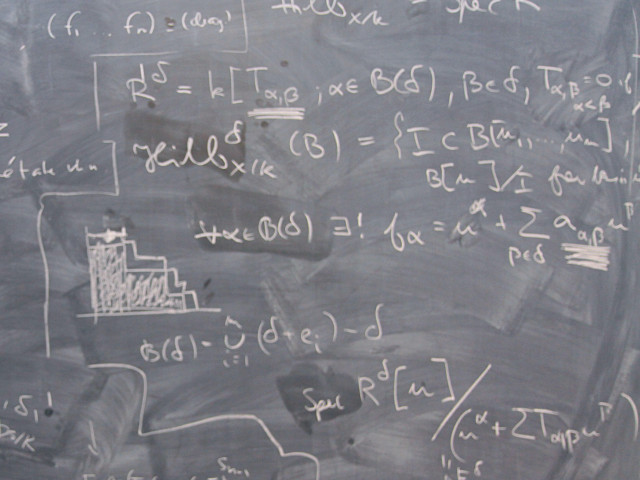Basic concepts from logic and set theory. Different forms of proof. Arithmetics for rational and real numbers. Permutations and combinations. The binomial theorem. Factorization of polynomials, polynomial division, completing the square. The concept of a function. Elementary functions: polynomials, rational functions, exponential functions, logarithms, trigonometric functions and their inverses. Sketching graphs by hand. Compositions and inverses of functions. Laws of exponents and logarithms. Trigonometric formulas. Simpler equations involving elementary functions, in particular, polynomial equations, trigonometric equations, equations involving radicals, logarithms and absolute values. Simpler inequalities. Equations for the line, circle, ellipse, hyperbola, and parabola. Complex numbers: standard form and polar form, complex exponential function. Introduction to the use of computer-based mathematical tools for calculation and visualization.
SF1695 Basic course in Mathematics 7.5 credits

Information per course offering
Information for Autumn 2025 Start 25 Aug 2025 programme students
- Course location
KTH Campus
- Duration
- 25 Aug 2025 - 24 Oct 2025
- Periods
Autumn 2025: P1 (7.5 hp)
- Pace of study
50%
- Application code
50680
- Form of study
Normal Daytime
- Language of instruction
Swedish
- Course memo
- Course memo is not published
- Number of places
Places are not limited
- Target group
- No information inserted
- Planned modular schedule
- [object Object]
- Schedule
- Part of programme
Contact
Course syllabus as PDF
Please note: all information from the Course syllabus is available on this page in an accessible format.
Course syllabus SF1695 (Autumn 2025–)Content and learning outcomes
Course contents
Intended learning outcomes
After completing the course, the student shoule be able to:
- Use concepts, theorems and methods to solve, and present solutions to, problems within the parts of the basic mathematics described by the course contents.
- Use programming to solve problems within the parts of the basic mathematics and its applications described by the course contents.
- Read and comprehend mathematical text.
with the purpose to:
- Develop a good understanding of basic mathematics as a ground for the continued studies in mathematics as well as for being able to use it to mathematically model certain applied problems.
- Develop a skill in using programming in order to solve some applied problems as well as to visualize and present the results in a clear manner.
Literature and preparations
Specific prerequisites
Basic requirements. (Matematik 3C passed.)
Literature
Examination and completion
Grading scale
Examination
- DAT1 - Computer laboration, 1.5 credits, grading scale: P, F
- TEN1 - Exam, 6.0 credits, grading scale: A, B, C, D, E, FX, F
Based on recommendation from KTH’s coordinator for disabilities, the examiner will decide how to adapt an examination for students with documented disability.
The examiner may apply another examination format when re-examining individual students.
If the course is discontinued, students may request to be examined during the following two academic years.
Based on recommendation from KTH’s coordinator for disabilities, the examiner will decide how to adapt an examination for students with documented disability.
The examiner may apply another examination format when re-examining individual students.
Other requirements for final grade
Written examination, possibly with the option of continuous assessment.
Examiner
Ethical approach
- All members of a group are responsible for the group's work.
- In any assessment, every student shall honestly disclose any help received and sources used.
- In an oral assessment, every student shall be able to present and answer questions about the entire assignment and solution.